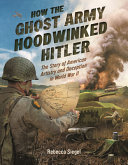2018 School Spending Survey Report
How the Ghost Army Hoodwinked Hitler: The Story of American Artistry and Deception in World War II
Peachtree.
Nov. 2025.
176p.
Tr $19.99. ISBN 9781682637586.
COPY ISBN
VERDICT Delving into a unique element of WWII, this book will be well received by students, teachers, and anyone interested in military strategy.
ALREADY A SUBSCRIBER? LOG IN
We are currently offering this content for free. Sign up now to activate your personal profile, where you can save articles for future viewing





Be the first reader to comment.
Comment Policy:
Comment should not be empty !!!